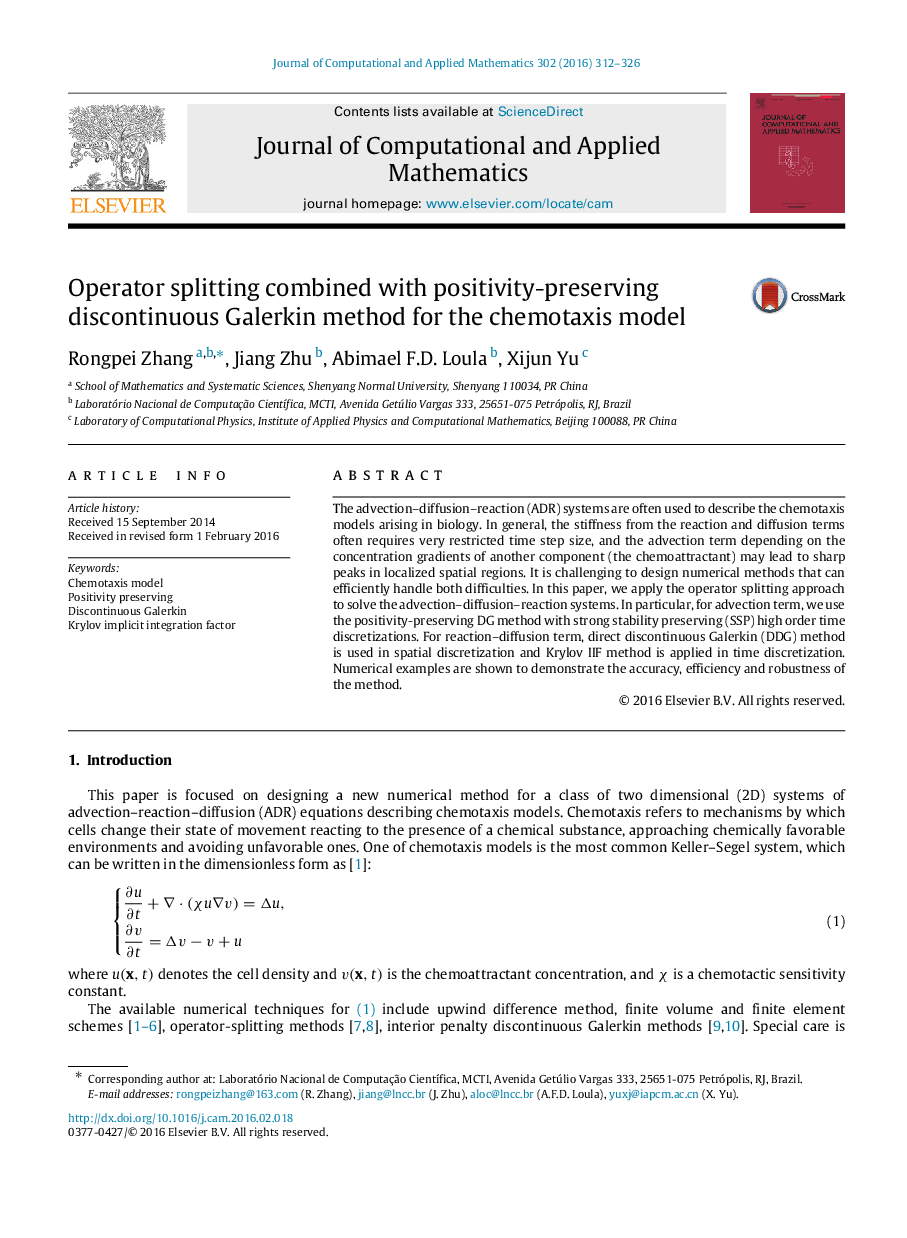| Article ID | Journal | Published Year | Pages | File Type |
|---|---|---|---|---|
| 4637901 | Journal of Computational and Applied Mathematics | 2016 | 15 Pages |
The advection–diffusion–reaction (ADR) systems are often used to describe the chemotaxis models arising in biology. In general, the stiffness from the reaction and diffusion terms often requires very restricted time step size, and the advection term depending on the concentration gradients of another component (the chemoattractant) may lead to sharp peaks in localized spatial regions. It is challenging to design numerical methods that can efficiently handle both difficulties. In this paper, we apply the operator splitting approach to solve the advection–diffusion–reaction systems. In particular, for advection term, we use the positivity-preserving DG method with strong stability preserving (SSP) high order time discretizations. For reaction–diffusion term, direct discontinuous Galerkin (DDG) method is used in spatial discretization and Krylov IIF method is applied in time discretization. Numerical examples are shown to demonstrate the accuracy, efficiency and robustness of the method.
